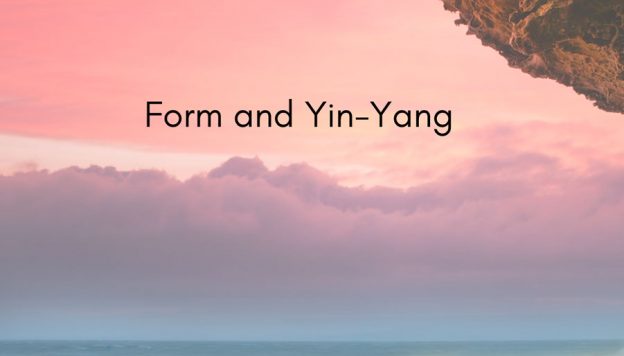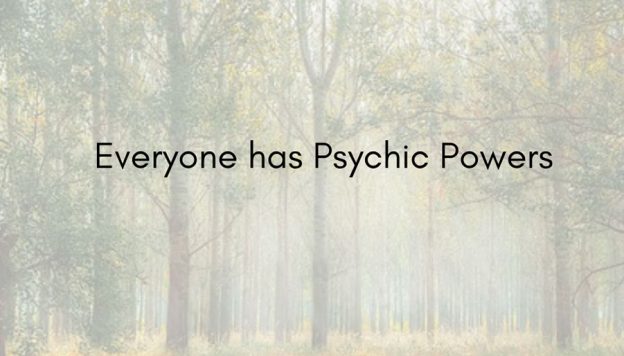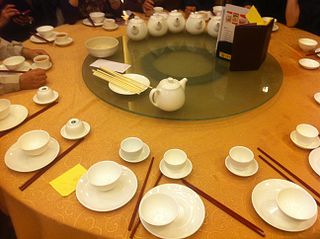“Is it better to have a round or square dining table?” In feng shui consultations, this is a frequently asked question. Naturally, which is better has a lot to do with the space; the surrounding furniture, the family structure, and the setting one is trying to create.
In consideration of any work, we always begin with the fundamental principles of yin and yang. What is dynamic and mobile is yang, while what is static and stable is yin. Hence, round shapes are yang and square or rectangular shapes are yin.
In applying Yin-Yang Principles, there are two considerations: Resonance and Balance.
According to the Principle of Resonance, if you are trying to create a yang environment you would use a round table. For a yin environment, you would use a square table.
In China, round dining tables are favored, while in the West, rectangular tables are more common. At a Chinese party, everything takes place around the dining table during dinner. This can be seen through the dynamic communal eating, the shared lazy susan, the host serving everyone and trying to push guests to eat more; people trying to out-drink each other, and everybody talking to everybody. This loud and lively event is very dynamic, very yang. A round table resonates with this situation, and it makes sense to use one.
In the West, a party begins with formal dining. People sit around a rectangular table, converse quietly with those who are immediately nearby, rather than with the whole table. More often, one helps themselves to food rather than being served. The atmosphere is more formal and calm, more yin. This resonates with the energy of a rectangular table. Funnily enough, Chinese parties often end when dinner is over, while Western parties begin when dinner is over.
For a small dining area, for efficient use of space, if the table has to rest against a solid wall, it’s better to use a square table and push one end against the wall. Since round tables resonate with yang energy, they are used in more open spaces. A square/rectangular table is more stable and calm, and good for long conversations. A round table provides a more dynamic atmosphere, and is better for fast chitchat. If you want your visitors to stay long, sit around a square table, otherwise, use a round table.
The shape of the table should also be taken into consideration when operating a business. Understanding resonance with space is important for business. For example, in a fast food restaurant, it’s good to use more yang features. These include more round and circular forms, as well as open and bright spaces. These yang characteristics affect people to eat quickly and leave quickly. On the other hand, for fine dining, people often wish to take their time to enjoy the food and conversation. In these situations, it is better to use more yin features, such as rectangular tables and dim light.
Balance is the other principle one must consider. It refers to the balance of yin and yang. In this situation we mean the balance of round and square tables. Even for a fast food restaurant, if all tables are round, the quality of the place becomes too yang, which is not ideal. Similarly, in a fancy dining setting, an excessively yin quality means that there is not enough flow in the setting.
Coffee shops like Starbucks use a lot of small round tables because they have solo customers in mind. With this type of set-up, there doesn’t seem to be any “empty” seats. Also, those having coffee alone don’t feel—or appear to be — lonely.
“In environmental psychology, the round table is much more comfortable and informal for individuals, as well as groups of people, to sit at,” says Starbucks executive Rubinfeld. However, this is not necessarily true. It very much depends on why people are sitting there. Too many round tables could be excessively yang, and incite a restless, unstable feeling. If all tables in the room were round, the atmosphere will be very dynamic, but chaotic. Any sense of restfulness or comfort will be missing.
The key is balance, the balance of yin and yang. Whether a design should be weighted more in the yin or yang direction, is based on the nature of the business. But it should never be extreme. A restaurant may want to try to provide a comfortable atmosphere, but not so much that customers feel so relaxed and comfortable that they hang around forever.
The shape of a table is not only important for dining, it is also important for a business office. It affects efficiency and creativity.
Once I was invited to consult with an airplane company about the design of its new headquarters. I recommended using more yang features, such as round tables and more windows for spaces designated more for discussion and brain storming. For spaces designated for formal discussions, ceremonies, and signing of contracts, I recommended using rectangular tables and having fewer windows.
In summary, in any design, it is important to follow the highest guiding principles of Resonance and Balance with yin and yang.. And remember, the precise application of these principles depends on the effect one is trying to achieve.
Shan-tung Hsu
Blue Mountain Institute
shantunghsu@gmail.com










 There is a country with a land size of 35,900 Km square, 0.37 % of USA. It has a population of 23 million (7.35% USA). This country has no oil, iron, coal, gold, or mineral deposit, nor does it have any other noticeable natural resources.
There is a country with a land size of 35,900 Km square, 0.37 % of USA. It has a population of 23 million (7.35% USA). This country has no oil, iron, coal, gold, or mineral deposit, nor does it have any other noticeable natural resources.